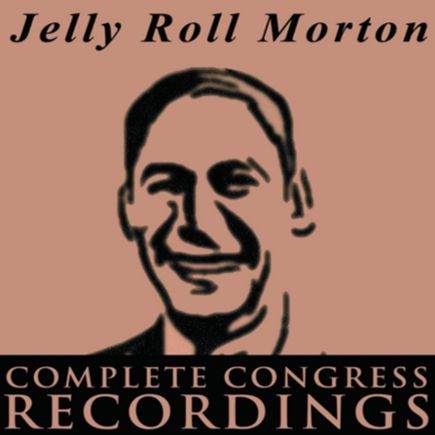Ain’t Misbehavin’: Fats Waller, Harlem et l’affirmation d’un art
Composée en 1929 par Fats Waller et Harry Brooks, sur des paroles d’Andy Razaf, Ain’t Misbehavin’ est bien plus qu’un simple succès musical: elle incarne l’esprit foisonnant de la Harlem Renaissance. Pensée comme numéro d’ouverture de la revue Connie’s Hot Chocolates, produite au Connie’s Inn — principal rival du Cotton Club —, elle célèbre l’inventivité afro-américaine dans un contexte de profonde effervescence artistique.
La chanson séduit par la combinaison d’une mélodie accrocheuse et d’harmonies sophistiquées, typiques du style stride dont Waller était l’un des maîtres incontestés. À travers un texte sur la fidélité amoureuse face aux tentations, Ain’t Misbehavin’ trouve une résonance universelle et intemporelle, renforçant son pouvoir d’attraction bien au-delà de son époque.
Son destin bascule lorsqu’un jeune Louis Armstrong est invité à doubler l’orchestre de Leroy Smith pour jouer au Hudson Theater. Son interprétation entre les actes, d’abord discrète depuis la fosse, devient rapidement le point culminant du spectacle. Un critique du New York Times souligne la puissance de ce moment, décrivant la chanson comme ‘synthétique, mais tout à fait agréable’. Armstrong est alors officiellement intégré à la distribution: sa prestation, désormais sur scène, propulse sa carrière vers une reconnaissance nationale.
Jelly Roll Morton: un dialogue entre deux époques du jazz
En mai et juin 1938, Jelly Roll Morton enregistre à Washington D.C., pour la Bibliothèque du Congrès, une série d’entretiens et de performances orchestrés par Alan Lomax. Parmi elles figure une version singulière de Ain’t Misbehavin’, immortalisée en piano solo. Cet enregistrement, rare et précieux, témoigne d’un moment où Morton, pionnier du jazz des années 1910 et 1920, entre en résonance avec une génération nouvelle incarnée par Fats Waller, compositeur de la chanson.
En 1938, le jazz s’apprête à franchir une nouvelle étape. Le swing triomphe, les big bands s’imposent, et le langage harmonique se complexifie. Morton, relégué alors dans une relative obscurité, saisit avec cette interprétation l’occasion de rappeler son rôle fondateur dans cette évolution. Ain’t Misbehavin’, enregistré en piano solo, est ponctué d’un passage de scat où Morton, fidèle à son tempérament théâtral, mêle humour et virtuosité, rappelant la dimension narrative et spontanée de son art.
Le jeu de Morton dans cette version s’appuie sur un style stride d’une maîtrise remarquable. Héritier direct du ragtime, ce style, caractérisé par la main gauche bondissante et la liberté rythmique de la main droite, devient ici un instrument d’expression à la fois lyrique et percussif. Morton y conjugue la rigueur de la structure et la liberté de l’improvisation, donnant à la chanson une profondeur inattendue, à la croisée du classicisme et de la modernité.
Ain’t Misbehavin’: Fats Waller, Harlem y la afirmación de un arte
Compuesta en 1929 por Fats Waller y Harry Brooks, con letra de Andy Razaf, Ain’t Misbehavin’ es mucho más que un éxito musical: encarna el espíritu vibrante del Renacimiento de Harlem. Concebida como número de apertura de la revista Connie’s Hot Chocolates, producida en el Connie’s Inn — principal competidor del Cotton Club —, celebra la inventiva afroamericana en un momento de intensa efervescencia artística.
La canción destaca por su combinación de melodía pegadiza y armonías sofisticadas, características del estilo stride que Waller dominaba con maestría. Su letra, centrada en la fidelidad amorosa frente a las tentaciones, le confiere una resonancia universal y atemporal, lo que ha contribuido a consolidar su atractivo a lo largo de las décadas.
Su destino cambia cuando un joven Louis Armstrong es invitado a reforzar la orquesta de Leroy Smith en el Hudson Theater. Su interpretación durante los intermedios, inicialmente desde el foso, se convierte pronto en el punto culminante del espectáculo. Un crítico del New York Times destacó la fuerza de ese momento, describiendo la canción como “sintética, pero francamente agradable”. Armstrong es entonces integrado oficialmente en el reparto, y su actuación sobre el escenario lanza su carrera hacia el reconocimiento nacional.
Jelly Roll Morton: un diálogo entre dos épocas del jazz
En mayo y junio de 1938, Jelly Roll Morton grabó en Washington D.C., para la Biblioteca del Congreso, una serie de entrevistas y actuaciones organizadas por Alan Lomax. Entre ellas destaca una versión singular de Ain’t Misbehavin’, inmortalizada al piano solo. Esta grabación, rara y valiosa, testimonia un momento en el que Morton, pionero del jazz de las décadas de 1910 y 1920, entra en resonancia con una nueva generación encarnada por Fats Waller, compositor de la pieza.
En 1938, el jazz estaba a punto de dar un nuevo salto. El swing triunfaba, las big bands se imponían y el lenguaje armónico se volvía más complejo. Morton, entonces relegado a una relativa oscuridad, aprovechó esta interpretación para reafirmar su papel fundador en esa evolución. Ain’t Misbehavin’, grabada en piano solo, incluye un pasaje de scat donde Morton, fiel a su temperamento teatral, mezcla humor y virtuosismo, recordando la dimensión narrativa y espontánea de su arte.
El estilo pianístico de Morton en esta versión se apoya en un enfoque stride de notable maestría. Heredero directo del ragtime, este estilo —caracterizado por el salto constante de la mano izquierda y la libertad rítmica de la derecha— se convierte aquí en un instrumento de expresión a la vez lírica y percusiva. Morton logra conjugar la precisión estructural con la libertad improvisadora, otorgando a la pieza una profundidad inesperada, en el punto de encuentro entre el clasicismo y la modernidad.
Ain’t Misbehavin’: Fats Waller, Harlem e l’affermazione di un’arte
Composta nel 1929 da Fats Waller e Harry Brooks, con testo di Andy Razaf, Ain’t Misbehavin’ è molto più di un successo musicale: rappresenta lo spirito vivace della Harlem Renaissance. Pensata come apertura della rivista Connie’s Hot Chocolates, andata in scena al Connie’s Inn — principale concorrente del Cotton Club —, celebra l’ingegno afroamericano in un contesto di grande fermento artistico.
Il brano conquista per l’efficace combinazione tra melodia accattivante e armonie raffinate, tipiche dello stile stride che Waller padroneggiava in modo magistrale. Il testo, incentrato sulla fedeltà amorosa nonostante le tentazioni, le conferisce una forza espressiva universale e senza tempo, che ne ha garantito la longevità.
La svolta arriva quando un giovane Louis Armstrong viene invitato a rinforzare l’orchestra di Leroy Smith al Hudson Theater. La sua esecuzione tra un atto e l’altro, inizialmente dal golfo mistico, diventa presto il momento clou dello spettacolo. Un critico del New York Times sottolineò la potenza di quel passaggio, definendo la canzone “sintetica, ma assolutamente gradevole”. Armstrong viene così inserito ufficialmente nel cast, e la sua performance sul palco segna l’inizio della sua ascesa a livello nazionale.
Jelly Roll Morton: un dialogo tra due epoche del jazz
Nel maggio e giugno del 1938, Jelly Roll Morton registrò a Washington D.C., per la Biblioteca del Congresso, una serie di interviste e performance curate da Alan Lomax. Tra queste spicca una versione singolare di Ain’t Misbehavin’, immortalata al pianoforte solo. Questa registrazione, rara e preziosa, testimonia un momento in cui Morton, pioniere del jazz degli anni Dieci e Venti, entra in risonanza con una nuova generazione incarnata da Fats Waller, compositore del brano.
Nel 1938 il jazz era sul punto di compiere una nuova svolta. Il swing trionfava, le big band dominavano la scena e il linguaggio armonico si faceva più complesso. Morton, allora relegato a una relativa oscurità, colse con questa interpretazione l’occasione per riaffermare il suo ruolo fondatore in tale evoluzione. Ain’t Misbehavin’, registrata al pianoforte solo, include un passaggio di scat in cui Morton, fedele al suo temperamento teatrale, fonde umorismo e virtuosismo, ricordando la dimensione narrativa e spontanea della sua arte.
Il pianismo di Morton in questa versione si fonda su uno stile stride di notevole padronanza. Erede diretto del ragtime, questo stile —caratterizzato dal movimento saltellante della mano sinistra e dalla libertà ritmica della destra— diventa qui uno strumento espressivo al tempo stesso lirico e percussivo. Morton vi unisce la precisione della struttura e la libertà dell’improvvisazione, donando al brano una profondità inattesa, nel punto d’incontro tra classicismo e modernità.
Ain’t Misbehavin’: Fats Waller, Harlem, and the assertion of an art form
Composed in 1929 by Fats Waller and Harry Brooks, with lyrics by Andy Razaf, Ain’t Misbehavin’ is far more than a popular hit — it captures the dynamic spirit of the Harlem Renaissance. Originally conceived as the opening number for the revue Connie’s Hot Chocolates, staged at Connie’s Inn — the main rival of the Cotton Club — the piece celebrates African American creativity during a time of profound artistic vitality.
The song captivates through its blend of catchy melody and sophisticated harmonies, hallmarks of the stride piano style that Waller mastered like few others. Its lyrics, centered on romantic fidelity in the face of temptation, carry a timeless and universal resonance, lending the piece lasting relevance.
Its trajectory shifted dramatically when a young Louis Armstrong was asked to reinforce Leroy Smith’s orchestra at the Hudson Theater. His intermission performance — initially delivered from the orchestra pit — quickly became the highlight of the evening. A New York Times critic noted the impact of the moment, calling the song “synthetic but thoroughly enjoyable.” Armstrong was soon officially added to the cast, and his stage performance marked the beginning of his rise to national fame.
Jelly Roll Morton: a dialogue between two eras of jazz
In May and June 1938, Jelly Roll Morton recorded in Washington, D.C., for the Library of Congress, a series of interviews and performances organized by Alan Lomax. Among them stands out a unique version of Ain’t Misbehavin’, captured as a solo piano performance. This rare and valuable recording reflects a moment when Morton, a pioneer of jazz in the 1910s and 1920s, connected with a new generation embodied by Fats Waller, the composer of the piece.
In 1938, jazz was about to take a new turn. Swing was flourishing, big bands were dominating, and the harmonic language was becoming more complex. Morton, then relegated to relative obscurity, used this interpretation to reaffirm his foundational role in that evolution. Ain’t Misbehavin’, recorded as a piano solo, includes a scat passage where Morton, true to his theatrical temperament, blends humor and virtuosity, recalling the narrative and spontaneous dimension of his art.
Morton’s playing in this version relies on a stride style of remarkable mastery. A direct heir of ragtime, this style—defined by the leaping left hand and the rhythmic freedom of the right—becomes here both lyrical and percussive. Morton combines structural rigor with improvisational freedom, giving the piece an unexpected depth at the intersection of classicism and modernity.
Autres articles – Otros artículos – Altri articoli
Ain’t Misbehavin’–19.07.1929–Louis ARMSTRONG
Ain’t Misbehavin’–02.08.1929–Fats WALLER
Ain’t Misbehavin’–13.07.1933–Duke ELLINGTON
Ain’t Misbehavin’–09.07.1935–Paul WHITEMAN & Jack TEAGARDEN
Ain’t Misbehavin’–03.03.1937–Jimmy MUNDY
Ain’t Misbehavin’–22.04.1937–Django REINHARDT
Ain’t Misbehavin’–xx.xx.1944–Art TATUM
Ain’t Misbehavin’–18.05.1950–Sarah VAUGHAN
Ain’t Misbehavin’–xx.10.1955–Johnny HARTMAN


